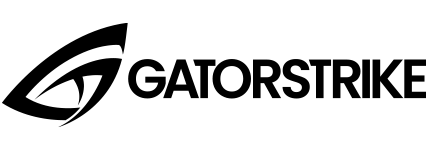
Top Pickleball Strategies to Win Every Match
Share
Introduction
In the ever-evolving game of pickleball, strategies often determine the outcome of a match. While physical prowess and skill are essential, strategic play can elevate a good player into a great one. Whether you’re competing in a local tournament or just enjoying a game with friends, mastering the right strategies can give you the edge needed to win consistently. This article delves into the top strategies that can transform your pickleball game, helping you secure victory in every match.
Understanding the Basics of Pickleball Strategy
The Importance of Court Positioning
Court positioning is the foundation of any effective pickleball strategy. By positioning yourself correctly, you can control the pace of the game, cut down on your opponent’s angles, and set yourself up for success. The most advantageous position is at the net, where you can quickly intercept shots and apply pressure on your opponents. Staying at the baseline too long, especially after a serve, can leave you vulnerable to aggressive net players. Transitioning to the net as soon as possible and maintaining a balanced stance allows you to cover more ground and be prepared for any shot.
Mastering the Serve and Return
The serve and return are the starting points of every rally, and mastering these elements is crucial for setting the tone of the match. A well-placed serve can force your opponent into a weak return, giving you the upper hand from the outset. Similarly, a deep and controlled return can push your opponent back, allowing you to advance to the net. Varying your serve with spins and placement can keep your opponent guessing, while consistently returning deep shots can limit their offensive options. Focus on accuracy and consistency, as these are key to maintaining control during the early stages of a rally.
The Power of Consistency
Reducing Unforced Errors
In pickleball, unforced errors can quickly shift the momentum in favor of your opponent. Consistency is paramount, as it reduces the likelihood of making mistakes and keeps pressure on your adversary. Concentrate on maintaining a steady rhythm in your play, avoiding risky shots that may lead to errors. Simplifying your game by focusing on high-percentage shots—such as deep returns and cross-court dinks—can help you stay in control. Over time, reducing unforced errors will lead to a more reliable and robust game, making it harder for your opponents to find weaknesses to exploit.
Developing a Reliable Dink Game
The dink is a subtle yet powerful weapon in pickleball, particularly in the context of a strategic, slow-paced game. By mastering the dink, you can engage your opponent in long rallies, wearing them down and forcing them into making mistakes. A well-executed dink is characterized by its soft touch and precision, landing just over the net and within the non-volley zone. Developing a reliable dink game involves practicing both forehand and backhand dinks, as well as learning to transition quickly between dinking and more aggressive shots. This strategy can frustrate opponents who prefer a fast-paced game, giving you the upper hand in rallies.
Offensive Strategies
The Third Shot Drop
The third shot drop is one of the most critical offensive strategies in pickleball. After the serve and return, the third shot is often the first opportunity to take control of the point. A well-placed drop shot can neutralize your opponent’s advantage, forcing them to move forward and play a low ball near the net. This not only disrupts their rhythm but also allows you to move up to the net and take an advantageous position. The key to a successful third shot drop is a soft touch and precise placement, ensuring the ball lands in the non-volley zone, out of reach of your opponent’s aggressive strokes.
Poaching and Aggressive Net Play
In doubles play, poaching—where one player crosses over to intercept a ball intended for their partner—can be a game-changing tactic. Poaching allows you to take control of the net, applying pressure on your opponents and forcing them into difficult shots. To poach effectively, communication with your partner is crucial, as well as timing your movement to surprise your opponents. Aggressive net play, in general, involves anticipating your opponent’s shots, positioning yourself to intercept volleys, and using quick reflexes to put the ball away. By mastering these offensive strategies, you can dominate the net and dictate the pace of the game.
Defensive Tactics
Effective Lob Shots
Lob shots are a defensive tool that can help you reset the point or put your opponent on the defensive. When executed correctly, a lob can force your opponent to retreat from the net, giving you time to recover your position. The key to an effective lob is height and depth—aim to send the ball over your opponent’s head, landing deep in their court. While lobs can be risky if not placed well, they are invaluable for disrupting aggressive opponents who dominate the net. Practicing lobs regularly will improve your ability to use them effectively in match situations.
Neutralizing Opponent’s Power Shots
Facing an opponent with powerful shots can be intimidating, but with the right strategies, you can neutralize their strength. One effective tactic is to absorb their power by using a soft block, redirecting the ball with minimal force and making it difficult for them to continue their aggressive play. Positioning yourself slightly behind the baseline can also give you more time to react to fast shots. Additionally, varying the pace and spin of your returns can throw off their timing, reducing the effectiveness of their power game. By staying calm and focused, you can turn their strength into an opportunity for counterattack.
Mental Game Strategies
Staying Focused Under Pressure
The mental aspect of pickleball is often overlooked but is just as important as physical skill. Staying focused under pressure is crucial, especially in tight matches where every point counts. Develop a pre-serve routine to center yourself before each point, and practice deep breathing techniques to maintain calmness. Visualization can also be a powerful tool—mentally rehearse successful shots and strategies to build confidence. By maintaining a positive and focused mindset, you can perform consistently, even in high-pressure situations.
Reading Your Opponent’s Body Language
Understanding your opponent’s body language can give you valuable insights into their next move. Subtle cues, such as the angle of their paddle or the direction of their feet, can indicate where they intend to place their shot. By paying attention to these signals, you can anticipate their actions and position yourself accordingly. Reading body language also involves observing your opponent’s emotional state—if they appear frustrated or fatigued, they may be more prone to making mistakes. Use this knowledge to your advantage, adjusting your strategy to exploit their weaknesses.
Communication in Doubles Play
Coordinating with Your Partner
Effective communication is the cornerstone of successful doubles play. Coordinating with your partner ensures that both players are in sync, covering the court efficiently and avoiding unforced errors. Establish clear signals for poaching, switching sides, and calling out shots. Regularly communicate with your partner during the match, offering encouragement and discussing strategies. By working as a cohesive unit, you can outmaneuver your opponents and create opportunities for winning points.
Effective Use of Signals
In doubles play, signals are often used to communicate serve placement, poaching intentions, and other strategies without tipping off your opponents. Developing a set of signals with your partner can enhance your teamwork and make your plays more unpredictable. Practice these signals in advance to ensure both players understand them clearly and can execute them without hesitation. The effective use of signals can give you a tactical edge, allowing you to execute coordinated plays with precision.
Adapting to Your Opponent’s Style
Countering Aggressive Opponents
Aggressive opponents who rely on power and speed can be challenging to face, but with the right approach, you can neutralize their advantages. Focus on maintaining a calm, controlled game, using soft shots and dinks to slow down the pace. This can frustrate aggressive players, forcing them into making mistakes. Additionally, varying your shots and positioning can throw off their timing, making it harder for them to execute their power game. By adapting your strategy to counter their aggression, you can turn their strengths into vulnerabilities.
Exploiting Weaknesses
Every opponent has weaknesses, and identifying them early in the match is key to gaining the upper hand. Observe how they handle different types of shots—do they struggle with high balls, or are they uncomfortable at the net? Once you’ve identified a weakness, tailor your strategy to exploit it. For example, if your opponent has a weak backhand, aim your shots consistently to that side. By targeting their vulnerabilities, you can dictate the flow of the game and increase your chances of winning.
Enhancing Agility and Reflexes
Physical conditioning plays a pivotal role in executing effective pickleball strategies. Agility and quick reflexes are particularly crucial, as they allow you to respond rapidly to your opponent’s shots and maintain control during fast-paced rallies. To enhance your agility, incorporate lateral movements and quick direction changes into your training regimen. Exercises such as shuttle runs, ladder drills, and plyometric workouts can improve your ability to move swiftly and efficiently around the court. Reflex training, on the other hand, can be improved through drills that focus on reaction time, such as volley exchanges and quick-fire returns. By honing your physical abilities, you’ll be better equipped to handle the demands of high-intensity matches, giving you an edge over less conditioned opponents.
Maintaining Endurance Throughout the Match
Endurance is another critical aspect of physical conditioning, especially during long matches where fatigue can set in and impact your performance. Building cardiovascular endurance through activities like running, cycling, or swimming can help you maintain a high level of play from the first serve to the final point. Additionally, incorporating interval training—alternating between periods of high-intensity exercise and rest—can simulate the stop-and-start nature of pickleball and improve your stamina. Proper hydration and nutrition also play a role in sustaining energy levels, so be mindful of your diet and fluid intake before and during matches. With greater endurance, you’ll be able to stay sharp and focused, outlasting opponents who may tire as the match progresses.
Fine-Tuning Your Game Through Practice
Drilling for Precision
Practice is the bedrock of success in any sport, and pickleball is no exception. To fine-tune your game, incorporate drilling sessions into your practice routine, focusing on precision and consistency. Targeted drills, such as serving to specific spots, hitting dinks to different areas of the non-volley zone, or practicing drop shots, can help you develop accuracy and control. By repeatedly practicing these shots in a controlled environment, you’ll build muscle memory and improve your ability to execute them during matches. Consistent drilling also helps you identify and correct weaknesses in your game, allowing you to refine your technique and become a more well-rounded player.
Simulating Match Scenarios
In addition to drilling, it’s important to simulate match scenarios during practice to prepare for the pressures of competition. Practice playing points with different strategies, such as focusing on net play, hitting aggressive returns, or executing defensive lobs. These simulated matches should replicate the conditions of a real game as closely as possible, including scoring and positioning. This type of practice helps you become more comfortable with different situations you may encounter during a match, allowing you to react instinctively and make better decisions under pressure. The more you expose yourself to match-like conditions in practice, the more confident and prepared you’ll be when it’s time to compete.
Conclusion
Winning in pickleball requires more than just raw talent; it demands a combination of strategic thinking, mental toughness, physical conditioning, and consistent practice. By mastering court positioning, developing a reliable serve and return, and fine-tuning your offensive and defensive tactics, you can gain a significant advantage over your opponents. Communication, adaptability, and endurance further enhance your ability to win matches consistently. Ultimately, the key to success lies in understanding the nuances of the game and continuously working to improve every aspect of your play. With dedication and the right strategies, you can elevate your pickleball game and increase your chances of victory in every match you play.












